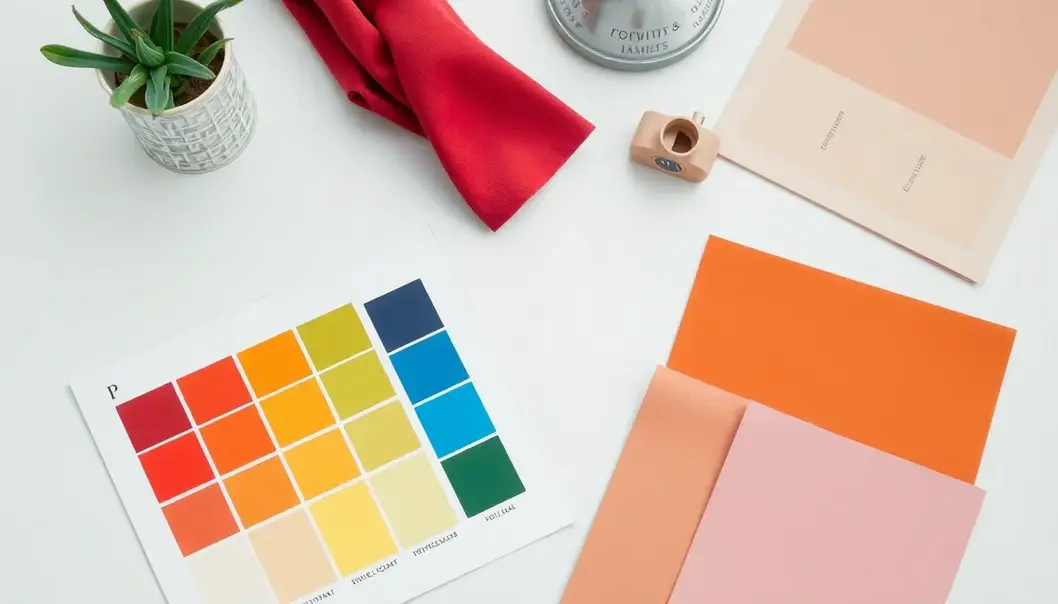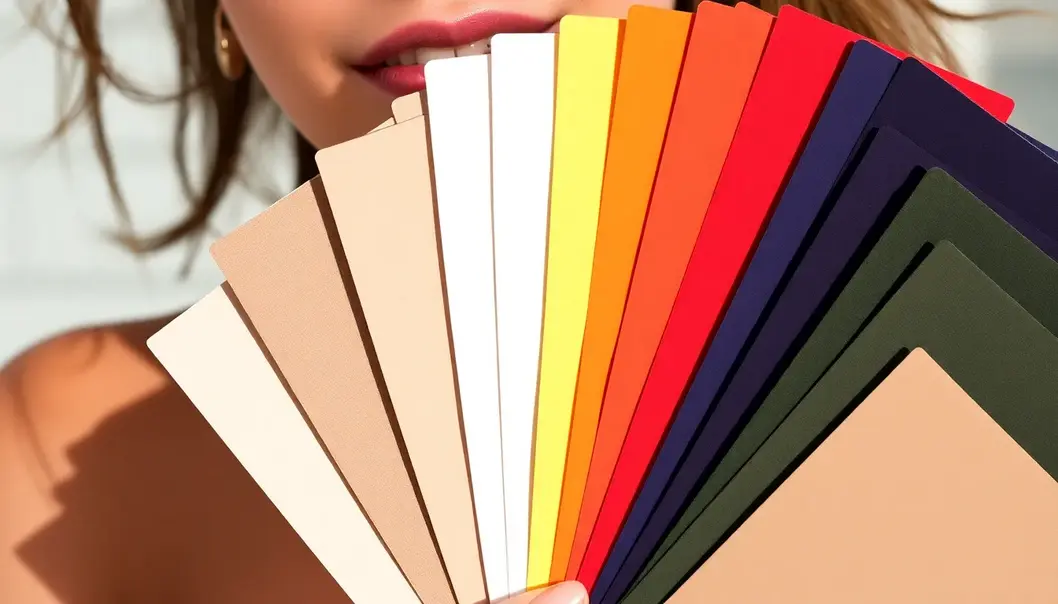Discover how the right colors can enhance your appearance and boost your confidence. Whether you’re mixing patterns or delving into the vibrant world of fashion for the first time, understanding which hues complement your unique skin tone is essential. With our easy guide, we’ll simplify this typically complex topic into approachable, practical advice tailored just for you. Let yourself be guided through a journey of self-expression with colors that not only suit your complexion but also your personality. Embrace the vibrant world of fashion as we help you discover powerful yet simple tips to unleash your best self through color coordination.
Identifying Your Skin Tone

Selecting the perfect outfit colors relies on knowing your skin tone. Each person carries unique undertones that guide which shades complement them best. Understanding these undertones empowers you to make confident fashion choices.
Undertones Explained: Warm, Cool, and Neutral
Undertones are the subtle hues beneath the skin’s surface, often classified into three categories: warm, cool, and neutral. Warm undertones often have a yellow, golden, or peachy hue. Cool undertones display shades of pink, red, or blue. Neutral undertones are a balanced mix of both, giving the skin a more understated tone.
Methods to Determine Your Undertone
To discover your undertone, start by examining your veins. In natural light, observe the veins on your wrist. Greenish veins suggest a warm undertone, while bluish or purplish veins indicate a cool undertone. If you find it difficult to distinguish between the two, your undertone might be neutral.
Another method involves your jewelry preference. People who look radiant in gold jewelry typically have warm undertones, while those who shine in silver usually have cool undertones. If both metals flatter you, your undertone is likely neutral.
Natural hair color can also offer hints. Generally, those with red, strawberry blonde, or dark brown hair tend to have warm undertones. In contrast, ash blonde, platinum, or black hair often corresponds with cool undertones.
Putting It All Together
Bringing these elements together provides clarity on how to select clothing colors. For those with warm undertones, earthy shades like browns, oranges, and yellows amplify your glow. Those with cool undertones dazzle in jewel tones, such as emerald, sapphire, and icy shades. If you find yourself in the neutral category, you’re fortunate to pull off a wide range of colors that span both warm and cool spectrums.
By accurately identifying your skin tone, you unlock the secret to a wardrobe that flatters your natural beauty and enhances your personal style in every situation.
Building Your Color Palette

Once you’ve identified whether your skin tone is warm, cool, or neutral, it’s time to build a color palette that enhances your natural beauty. This task might seem daunting at first, but with a bit of knowledge and experimentation, you can discover colors that perfectly complement your complexion.
Warm Skin Tones
If you have a warm skin tone, you’ll find earthy hues particularly flattering. Look for shades that resonate with the natural warmth of your complexion. Rich reds, golden yellows, peach, and orange are vibrant choices that will bring out the best in your skin. Additionally, earthy tones like olive, moss green, and camel can add a sophisticated touch to your wardrobe.
Cool Skin Tones
For those with cool skin tones, colors with blue undertones are your best friends. Consider incorporating icy blues, emerald greens, lavender, and plums into your palette. These shades highlight the cool undertones of your skin, making them ideal for both day and evening wear. Metallics like silver and pewter work beautifully for adding a bit of shimmer to your style.
Neutral Skin Tones
Neutral skin tones have the unique ability to carry off a wide spectrum of colors. You can opt for a balanced approach by mixing both warm and cool colors. Consider wearing blush pink, jade green, taupe, or navy for a harmonious ensemble. Experiment with pastels as well as jewel tones to find the combinations that speak to your personal style.
Experimenting with Colors
Color experimentation should be a joyful exploration rather than a rigid process. Start small when testing new hues. Introduce colors gradually through accessories like scarves, ties, or jewelry. Observe how these colors reflect on your skin in different lighting conditions. Casual settings allow for bold color trials, like mixing vibrant shirts or dresses with neutral pants or skirts.
For formal settings, consider a more understated approach. Choose key pieces that define the outfit with a pop of color, such as a muted burgundy or deep teal dress. This not only adds depth to your look but ensures elegance and sophistication.
As you build your wardrobe, remember that the colors you choose should make you feel confident and free. Your clothing is an extension of your personality, and when you find the right palette, it will seamlessly amplify your natural allure. For more ideas on blending colors and styles that align with your personal fashion sense, visit our fashion blog.
Final words
Equipped with the knowledge of identifying your skin tone and creating a palette that works for you, you’re ready to make fashion choices that highlight your natural beauty. Let colors speak for your personality while ensuring they align with your unique complexion. Remember, this journey is about enhancing confidence and self-expression through the art of color. Enjoy experimenting and find joy in crafting a wardrobe that celebrates your individuality.
Ready to experiment with color? Visit our website to explore a collection of clothing that matches your style.
Learn more: https://www.examplefashionguide.com/colors-for-skin-tone
About us
Our platform offers personalized fashion advice tailored to your needs. Whether you’re a beginner or a seasoned fashionista, our curated collections and fashion tips bring the latest trends and timeless styles to your wardrobe.

